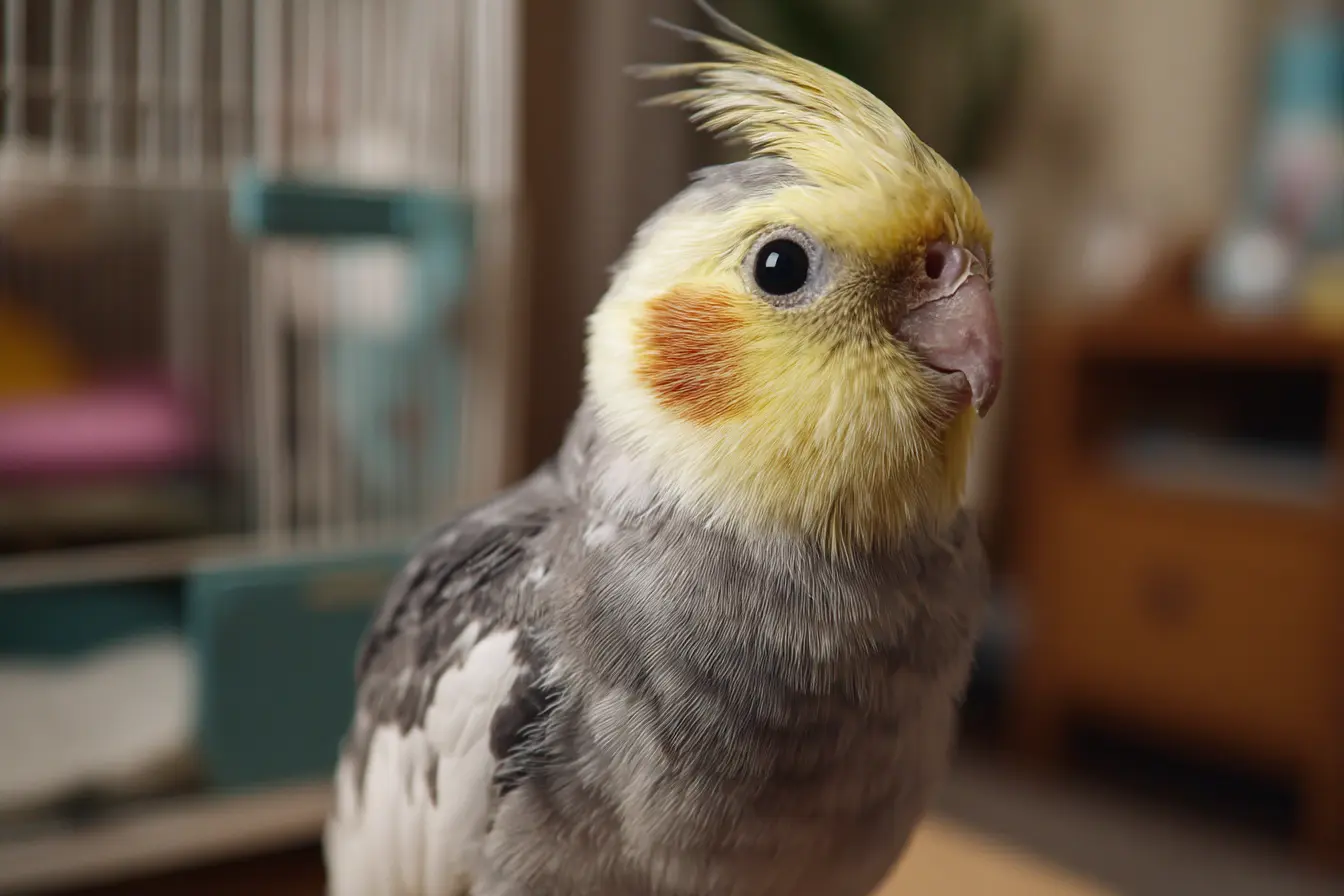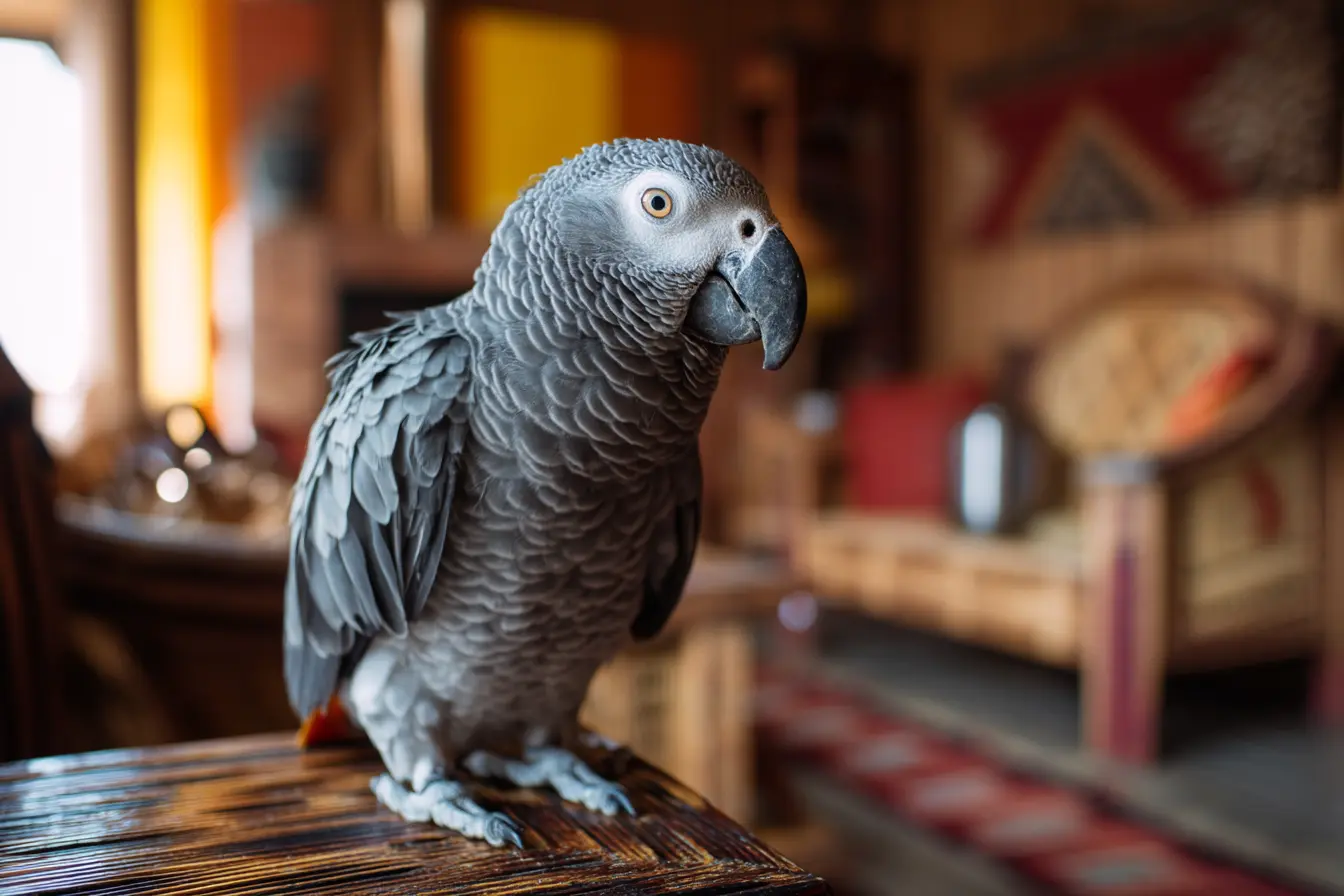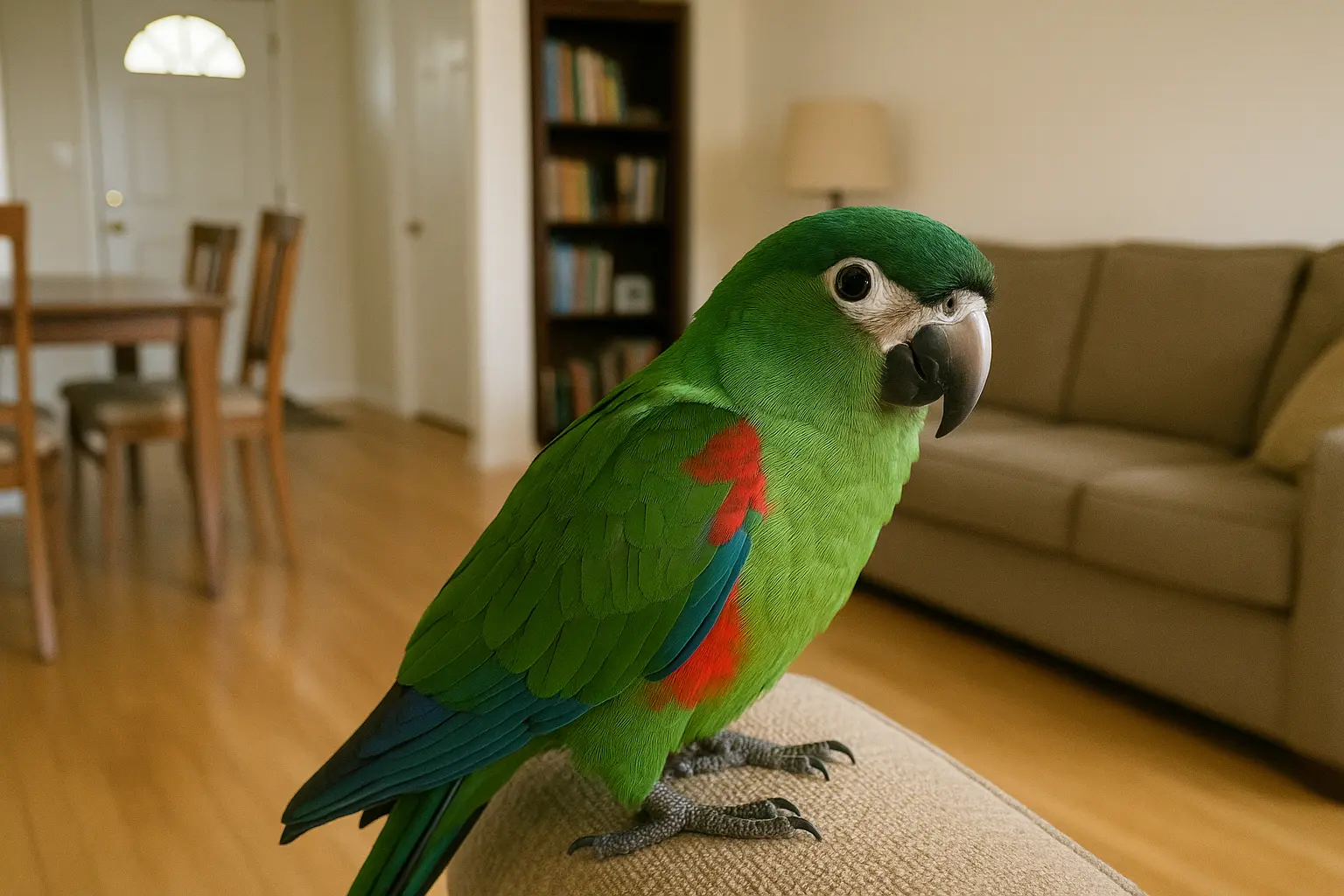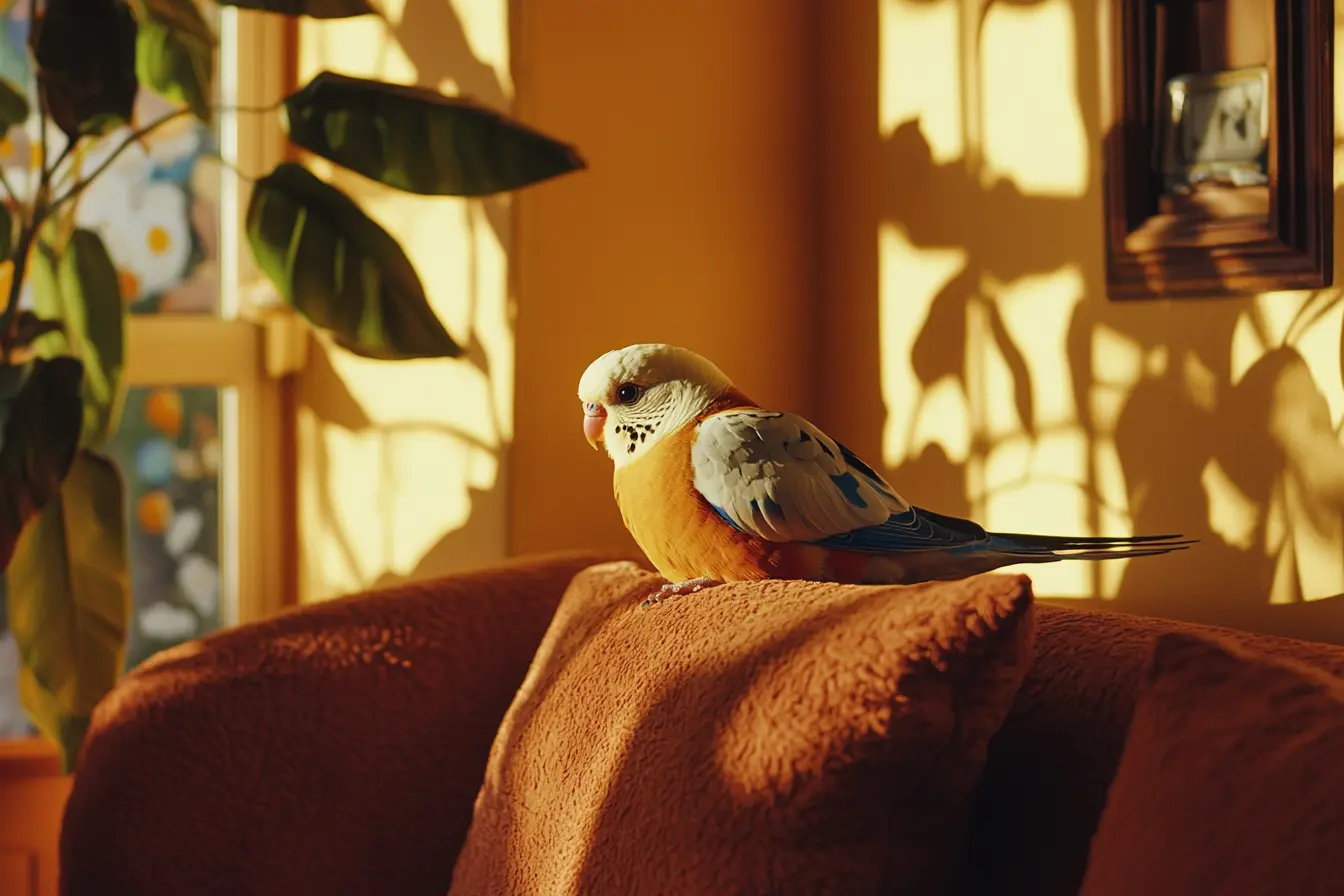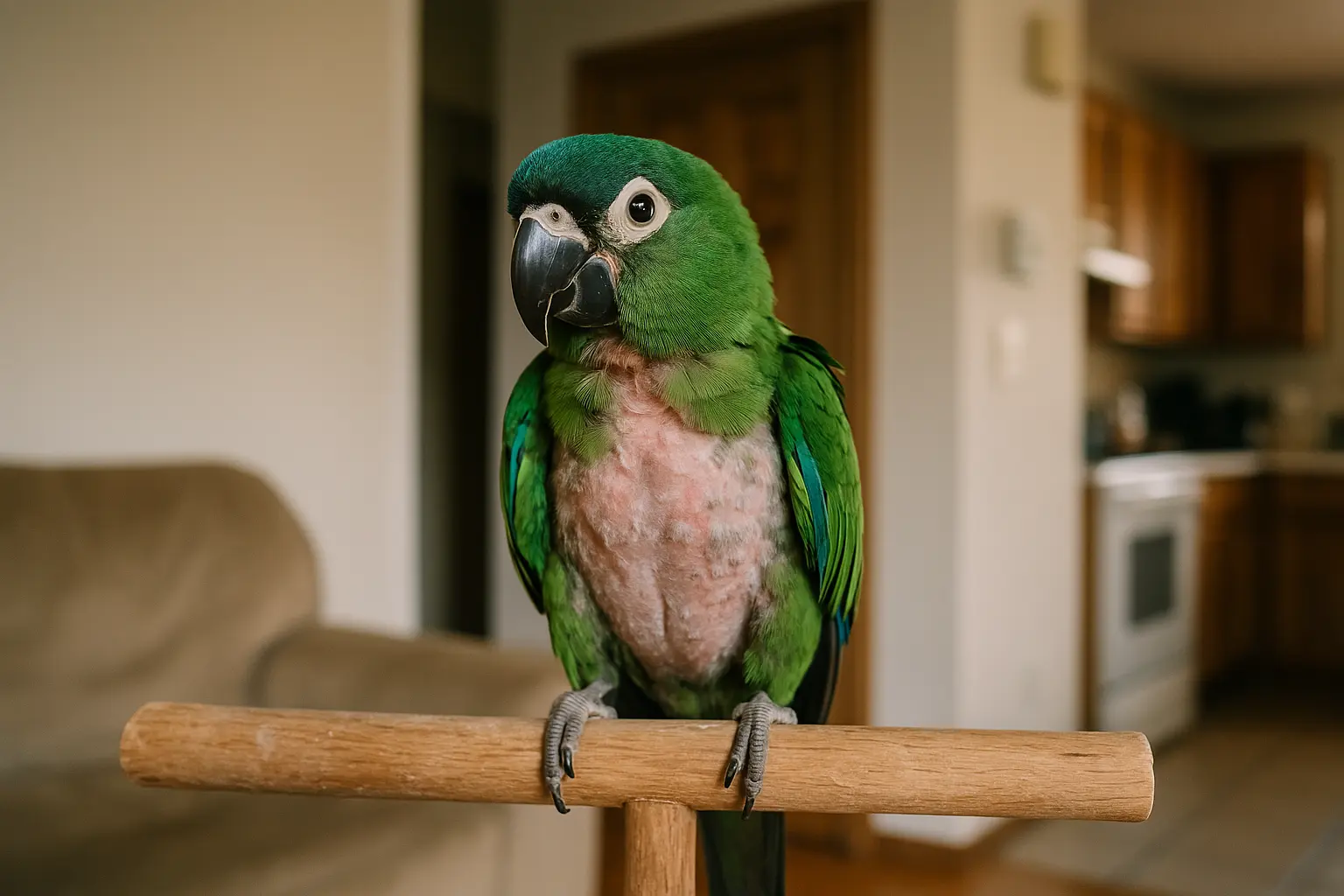
Feather Plucking & Self-Mutilation in Pet Birds: Causes, Prevention, and Treatment
Feather plucking and self-mutilation are common yet distressing behaviours seen in pet birds, particularly parrots such as African Greys, Cockatoos, Macaws, and Budgerigars. These behaviours can lead to severe feather loss, skin damage, and infections if left untreated. Understanding the underlying causes and implementing appropriate interventions is crucial for bird welfare.
What Is Feather Plucking and Self-Mutilation?
- Feather plucking: A bird persistently pulls out its own feathers, often leading to bald patches.
- Feather chewing: The bird damages its feathers without pulling them out completely.
- Self-mutilation: The bird inflicts wounds on its own skin, typically in the chest, legs, or wing areas.
These behaviours are often symptomatic of an underlying issue rather than a disease in themselves.
Causes of Feather Plucking and Self-Mutilation
There is no single cause for feather plucking and self-mutilation, but contributing factors can be divided into medical, psychological, and environmental causes.
Medical Causes
- Skin infections – Bacterial, fungal, or viral infections may cause irritation.
- Allergies – Reactions to food, cleaning products, or air pollutants.
- Parasites – Mites or lice can cause intense itching.
- Nutritional deficiencies – Lack of essential vitamins and minerals (e.g., vitamin A, calcium, or omega-3 fatty acids).
- Liver or kidney disease – Underlying organ dysfunction may trigger itching or discomfort.
- Hormonal imbalances – Excess hormones during breeding season can lead to feather plucking.
Psychological Causes
- Boredom – Lack of mental stimulation can lead to self-destructive behaviour.
- Stress or anxiety – Changes in routine, loud noises, or lack of a safe environment can trigger feather plucking.
- Lack of social interaction – Birds are highly social and need regular engagement with their human or bird companions.
- Separation anxiety – Some birds develop strong bonds with their owners and pluck when left alone.
- Past trauma – Neglect, abuse, or rehoming can lead to psychological distress.
Environmental Causes
- Dry air or poor humidity – Can lead to itchy, flaky skin.
- Exposure to toxins – Smoke, air fresheners, and certain non-stick cookware fumes can irritate a bird’s respiratory system and skin.
- Cage size and placement – A cage that is too small or placed in a high-traffic or stressful area can contribute to stress-induced plucking.
- Poor sleep patterns – Birds need 10-12 hours of uninterrupted sleep in a dark, quiet environment.
How to Diagnose Feather Plucking and Self-Mutilation
Since multiple factors can contribute to feather plucking, an avian vet should conduct a comprehensive examination, including:
- Physical examination – Checking for skin lesions, parasites, and signs of infection.
- Blood tests – Identifying nutritional deficiencies, organ disease, or infections.
- Skin and feather tests – Microscopic analysis for parasites, bacteria, or fungi.
- Dietary assessment – Evaluating nutritional intake.
- Behavioural history – Assessing environmental and psychological stressors.
A proper diagnosis helps differentiate feather plucking from normal moulting or other medical conditions.
Treatment and Management of Feather Plucking
Once the underlying cause is identified, treatment can be tailored accordingly.
Medical Treatments
- Treat infections or parasites – Antibiotics, antifungals, or anti-parasitic medications if needed.
- Improve nutrition – Provide a balanced diet with fresh vegetables, high-quality pellets, and omega-rich foods.
- Hormonal treatments – In severe cases, hormone therapy may help regulate breeding-related behaviours.
Environmental Adjustments
- Increase cage size – Provide a spacious, stimulating environment.
- Optimise humidity levels – Use a humidifier if necessary, especially in dry climates.
- Reduce exposure to toxins – Avoid smoking, aerosol sprays, and scented candles near birds.
- Improve sleep quality – Ensure a quiet, dark space for 10-12 hours of sleep per night.
Behavioural and Psychological Interventions
- Increase mental stimulation – Introduce foraging toys, puzzles, and interactive games.
- Provide social interaction – Spend quality time with your bird and allow supervised out-of-cage time.
- Establish a routine – Birds thrive on predictability; keeping a consistent daily routine can reduce anxiety.
- Avoid reinforcing the behaviour – Do not react negatively when your bird plucks, as this can reinforce the habit.
Protective Measures
- Collars or vests – In severe cases, protective collars may be used to prevent self-harm while treating underlying causes.
- Aloe vera sprays – May help soothe irritated skin (consult a vet before use).
The Importance of a Specialist Avian Vet
Feather plucking and self-mutilation are complex issues that require professional intervention. A specialist avian vet is crucial in diagnosing and treating these behaviours effectively.
Why Seek an Avian Vet?
- Accurate Diagnosis – Many medical conditions can contribute to feather plucking, and an avian vet can conduct the necessary tests to rule out infections, allergies, or organ disease.
- Tailored Treatment Plans – Birds require precise medication dosages and specific treatment approaches that general veterinarians may not be familiar with.
- Expert Advice on Diet and Environment – Avian vets can recommend nutritional changes, enrichment activities, and environmental modifications to reduce stress and prevent plucking.
- Long-Term Management – Some birds require ongoing care to manage psychological or hormonal causes of feather plucking. An avian vet can guide owners on behavioural training and stress reduction.
Preventing Feather Plucking and Self-Mutilation
While not all cases can be prevented, the following steps can significantly reduce the likelihood of feather plucking:
- Provide a balanced diet to prevent nutritional deficiencies.
- Ensure regular veterinary check-ups to catch medical issues early.
- Offer a variety of enrichment activities such as foraging, climbing structures, and interactive play.
- Maintain a stable environment with minimal stressors and consistent interaction.
- Monitor your bird’s behaviour for early signs of distress and address concerns promptly.
When to Seek Veterinary Help
If your bird shows persistent feather plucking or signs of self-mutilation, seek veterinary assistance as soon as possible. Delaying treatment can lead to secondary infections and severe psychological distress.
Red Flags That Require Immediate Attention
- Bleeding or open wounds from self-mutilation.
- Sudden or aggressive feather plucking.
- Lethargy, changes in appetite, or unusual droppings.
- Signs of infection, such as swelling, discharge, or foul odour.
Final Thoughts
Feather plucking and self-mutilation in pet birds are complex behaviours often linked to medical, psychological, or environmental factors. Identifying and addressing the root cause is essential for effective treatment. With proper care, patience, and veterinary guidance, many birds can recover and lead happy, fulfilling lives.
If your bird is showing signs of feather plucking, take proactive steps to improve its health and well-being—early intervention is key to preventing long-term damage.
Contents
- What Is Feather Plucking and Self-Mutilation?
- Causes of Feather Plucking and Self-Mutilation
- How to Diagnose Feather Plucking and Self-Mutilation
- Treatment and Management of Feather Plucking
- The Importance of a Specialist Avian Vet
- Preventing Feather Plucking and Self-Mutilation
- When to Seek Veterinary Help
- Final Thoughts
Tags
Related Vets
Vets near you
Speciality vets
- Aquatics vet specialists
- Birds vet specialists
- Camelids vet specialists
- Cats vet specialists
- Cattle vet specialists
- Deer vet specialists
- Dogs vet specialists
- Equines vet specialists
- Exotic vet specialists
- Goats vet specialists
- Pigs vet specialists
- Poultry vet specialists
- Sheep vet specialists
- Small Mammals vet specialists
- Wild vet specialists
